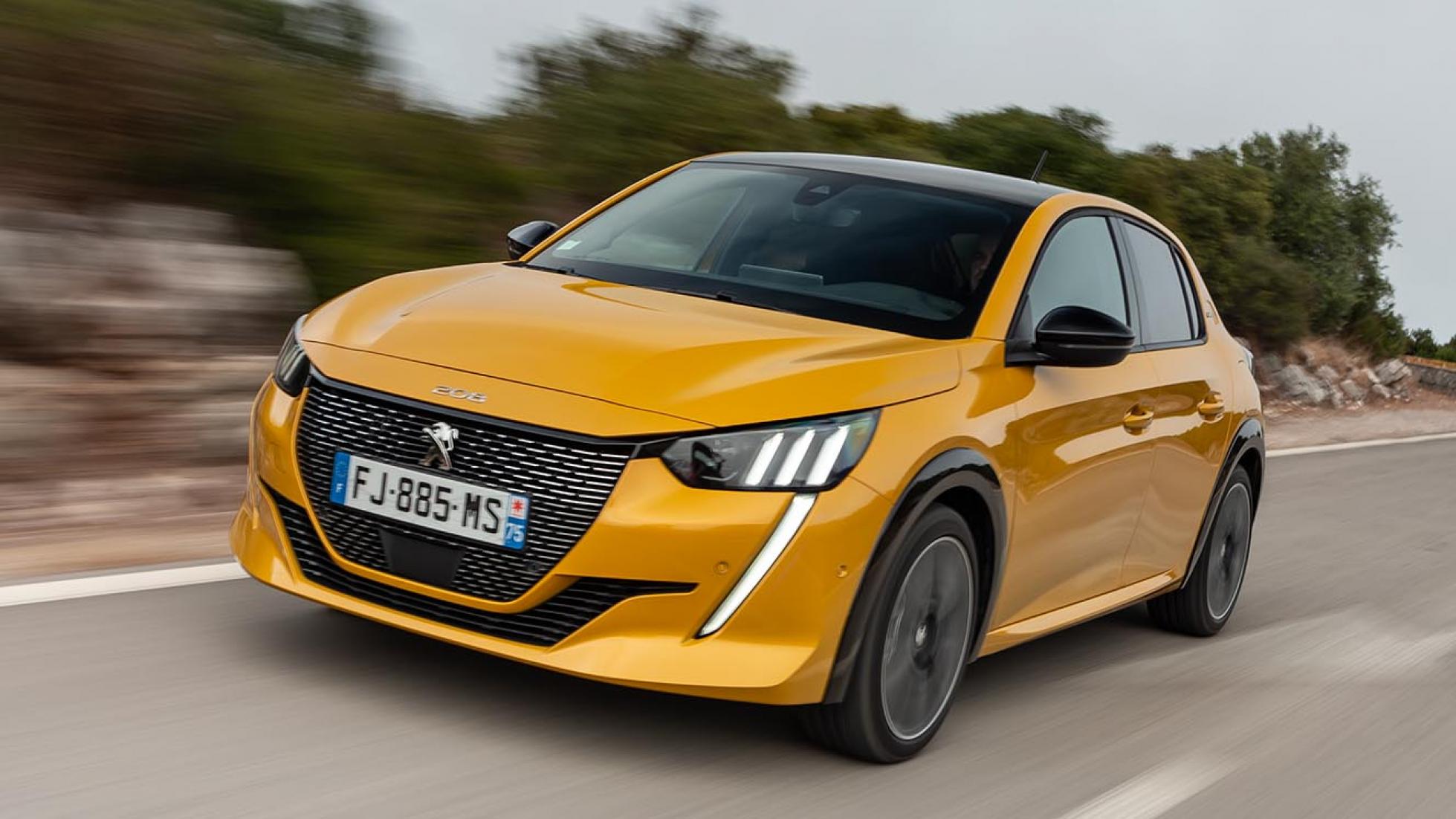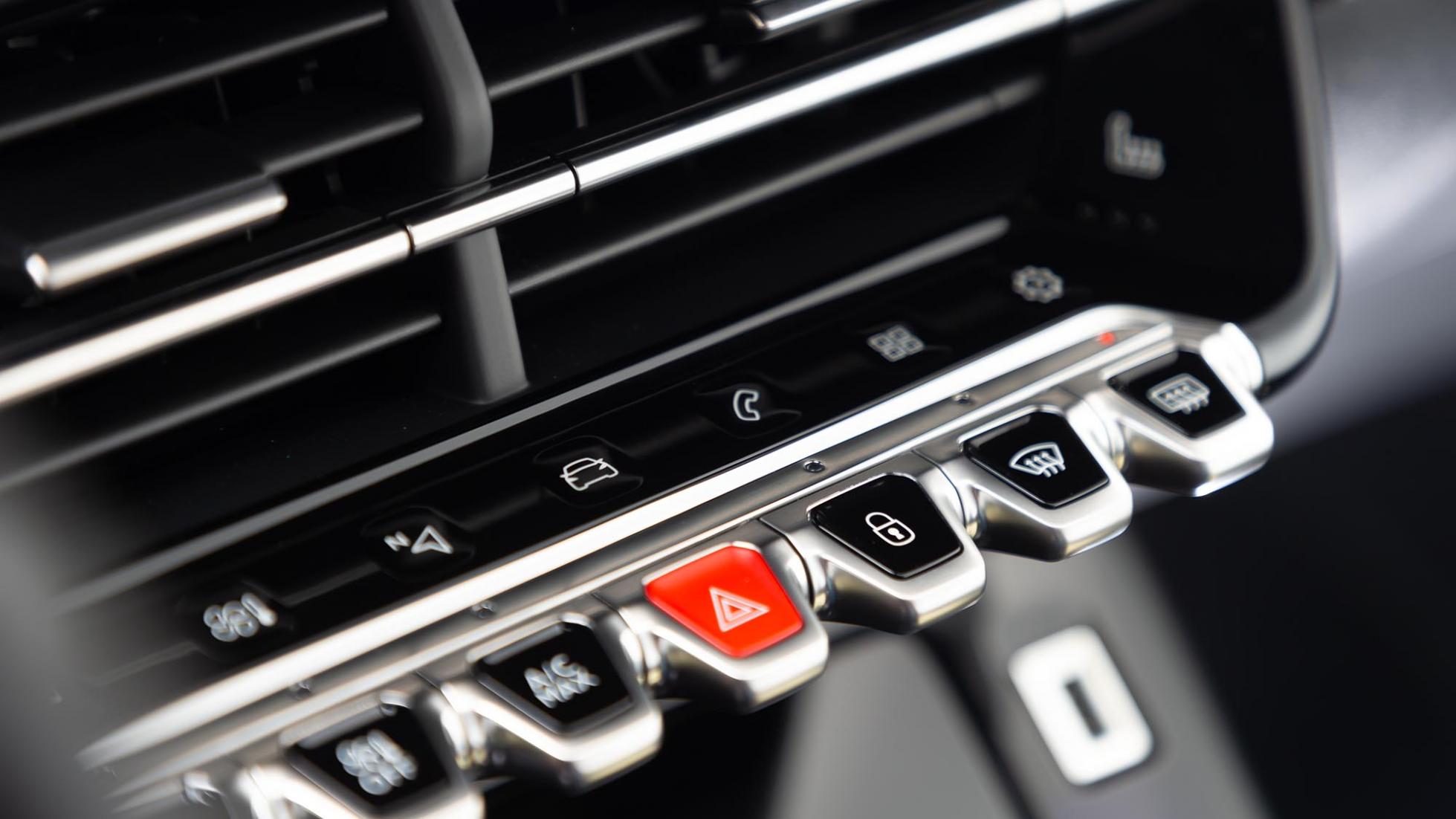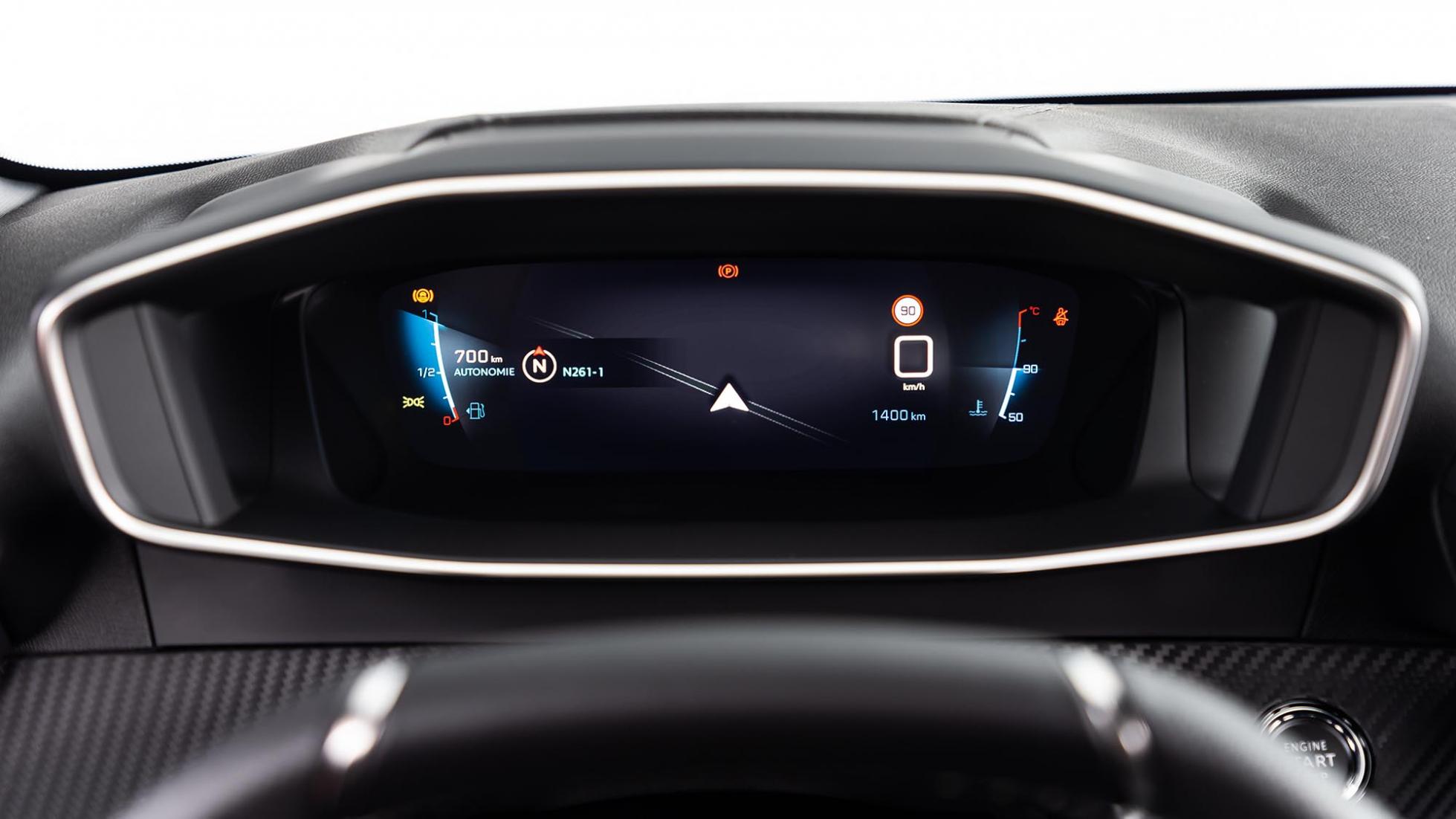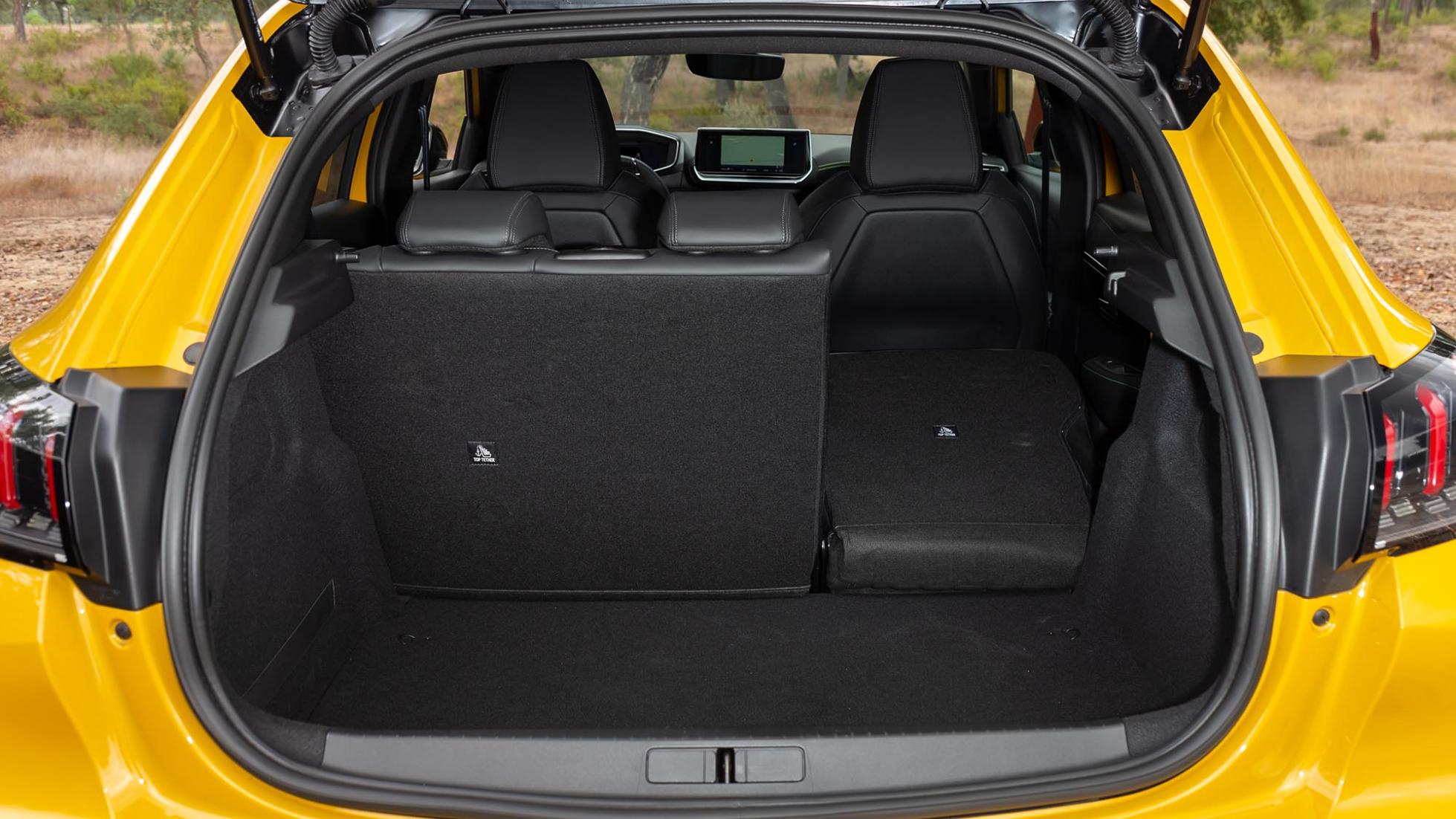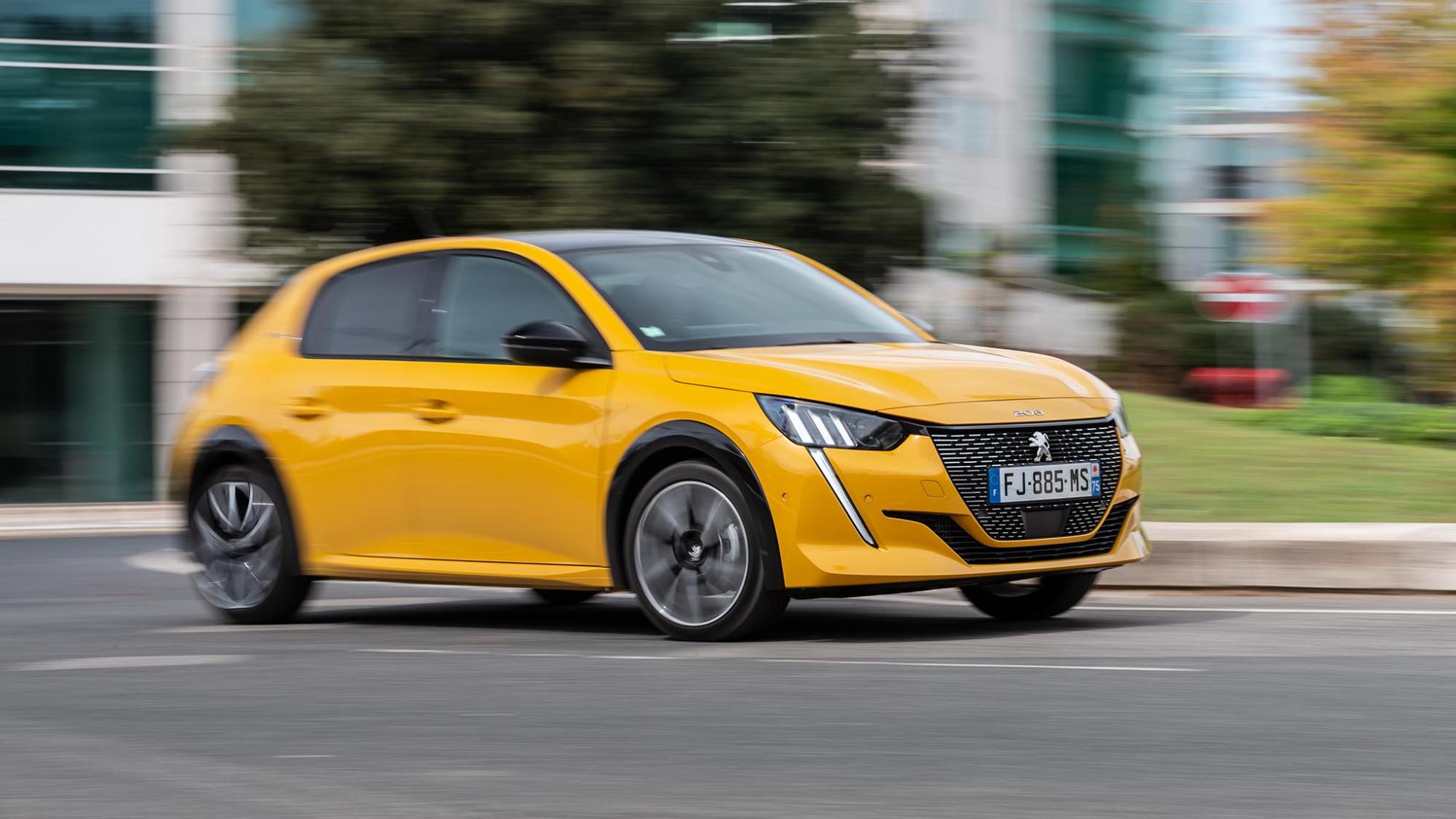
OVERVIEW - What is It?
A calculated gamble. The new Peugeot 208 is, on the face of it, yet another handsome French supermini from a nation that’s bloody terrific at building desirable small cars. And note that it’s not a 209 either, but a ‘new 208’, Peugeot having settled on names ending in ‘08’. So, same name, new face, and the same desire to duff up the Renault Clio, Citroen C3 and Ford Fiesta, while pinching a few sales from the supposedly posher likes of the Audi A1 and Mini.
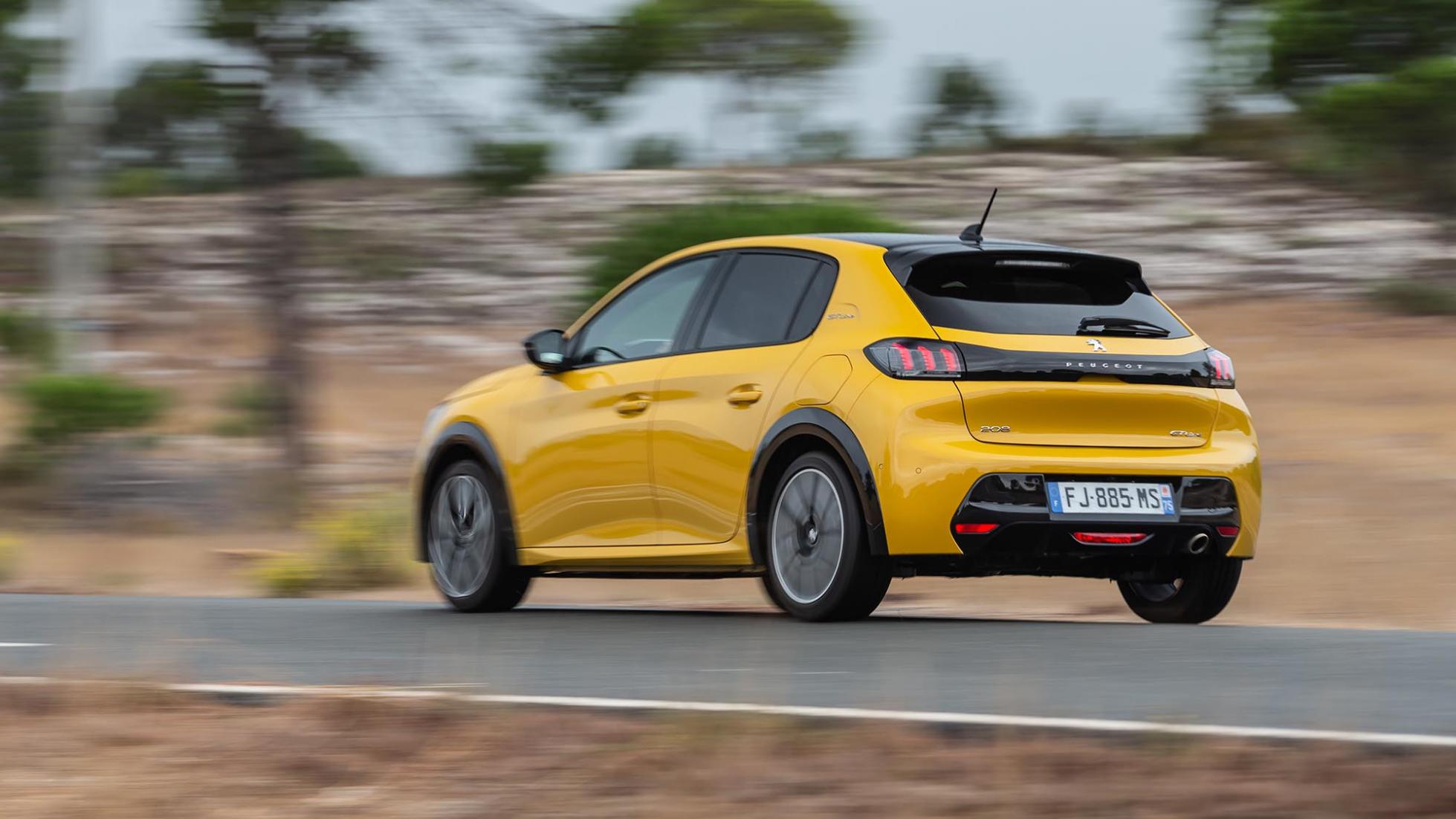
Except, there isn’t just a new Peugeot 208. There’s also a new Peugeot e-208. All-electric drive, but identical looks. No blanked-off grilles, platypus nosecones or even bespoke paint. It’s just a new 208, and just as you’ll choose between petrol and diesel (and pick the former), there’s now a third way. No fanfare, no gimmicks, just an electric option. If the demand is there, this could rewrite supermini history. As long as it’s not pants.
Before we get to the nitty gritty of combustion versus current, and range vs running costs, let’s just cover off the visuals – this is a seriously handsome supermini, less gawky in the face than the old 208 and less fussy than the over-creased Audi A1 or VW Polo. Prettier than a Fiesta too, and more modern than a Mini. Peugeot’s come a long way since it decided that styling cars was more complicated than just grafting a Gotham’s Joker grin on the front and heading for the wine cellar. The high-spec models with triple-LED ‘claw’ lights and 17-inch rims are extremely handsome. And the expectations don’t fall flat when you climb inside either.
The range (of models, not the battery) is pretty simple: things kick off with a 74bhp petrol and five-speed manual, the middle version is a 99bhp of the same 1.2-litre turbo with a sixth gear or an optional eight-speed auto, and then there’s the same engine again, this time with 128bhp as a range-topper with the automatic ‘box as standard. There’s only one diesel engine, a 99bhp 1.5-litre four-pot, but sales are expected to be minute. And of course, you can have an e-208 with running costs, says Peugeot, identical to the petrol one over four years.
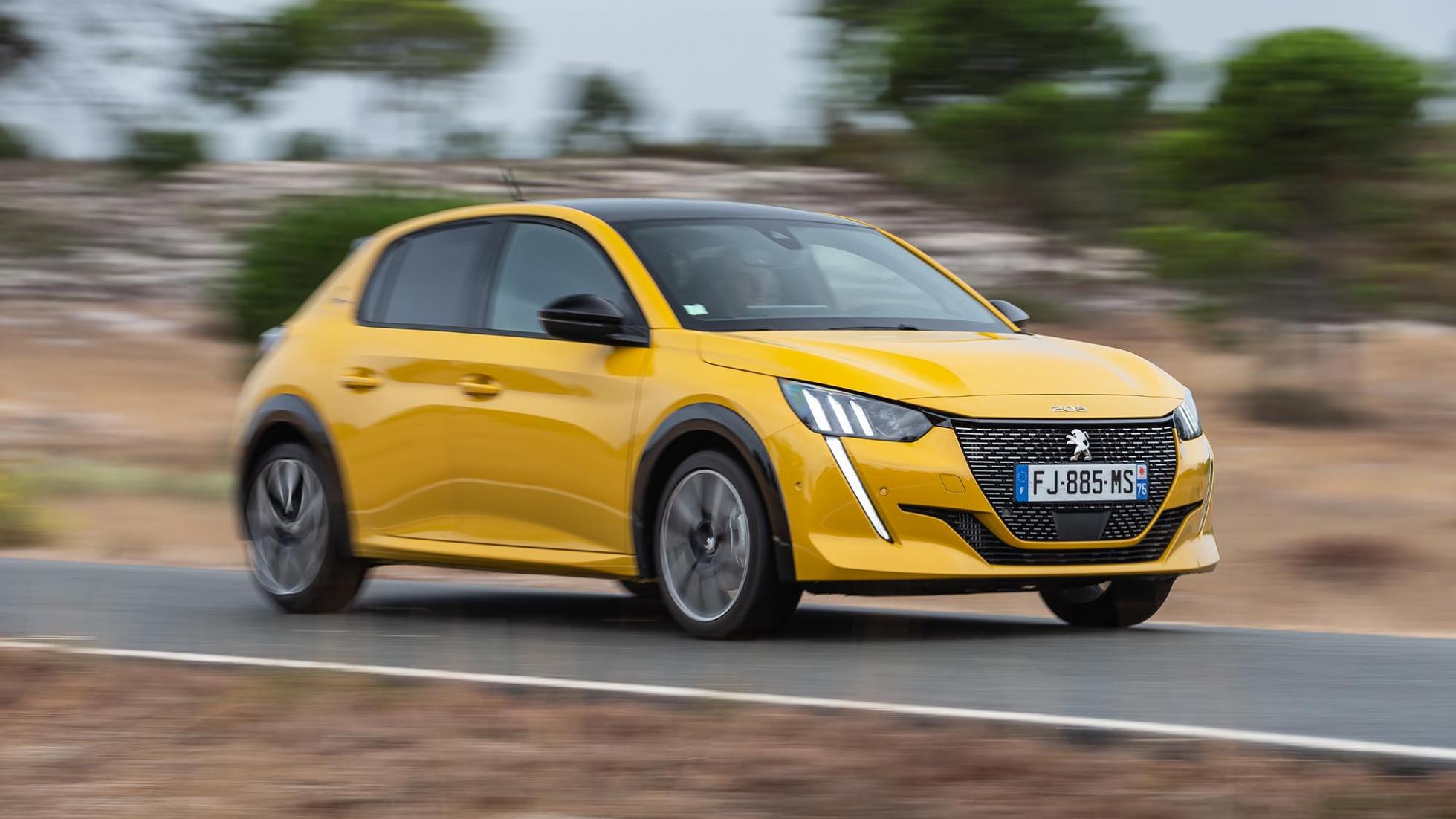
DRIVING - What Is It Like On The Road?
Right, shall we get the diesel out of the way first? Peugeot’s BlueHDi diesels are seriously smooth and extremely frugal, but even Peugeot predicts that of all the fuel-burning 208s it sells, only five per cent will be 99bhp turbodiesels. As compelling as it is to climb aboard a supermini with a 700km range, the 208 feels blunted and leaden by the diesel motor. Think of it as a very unlikely future museum piece – the last of the diesel superminis.
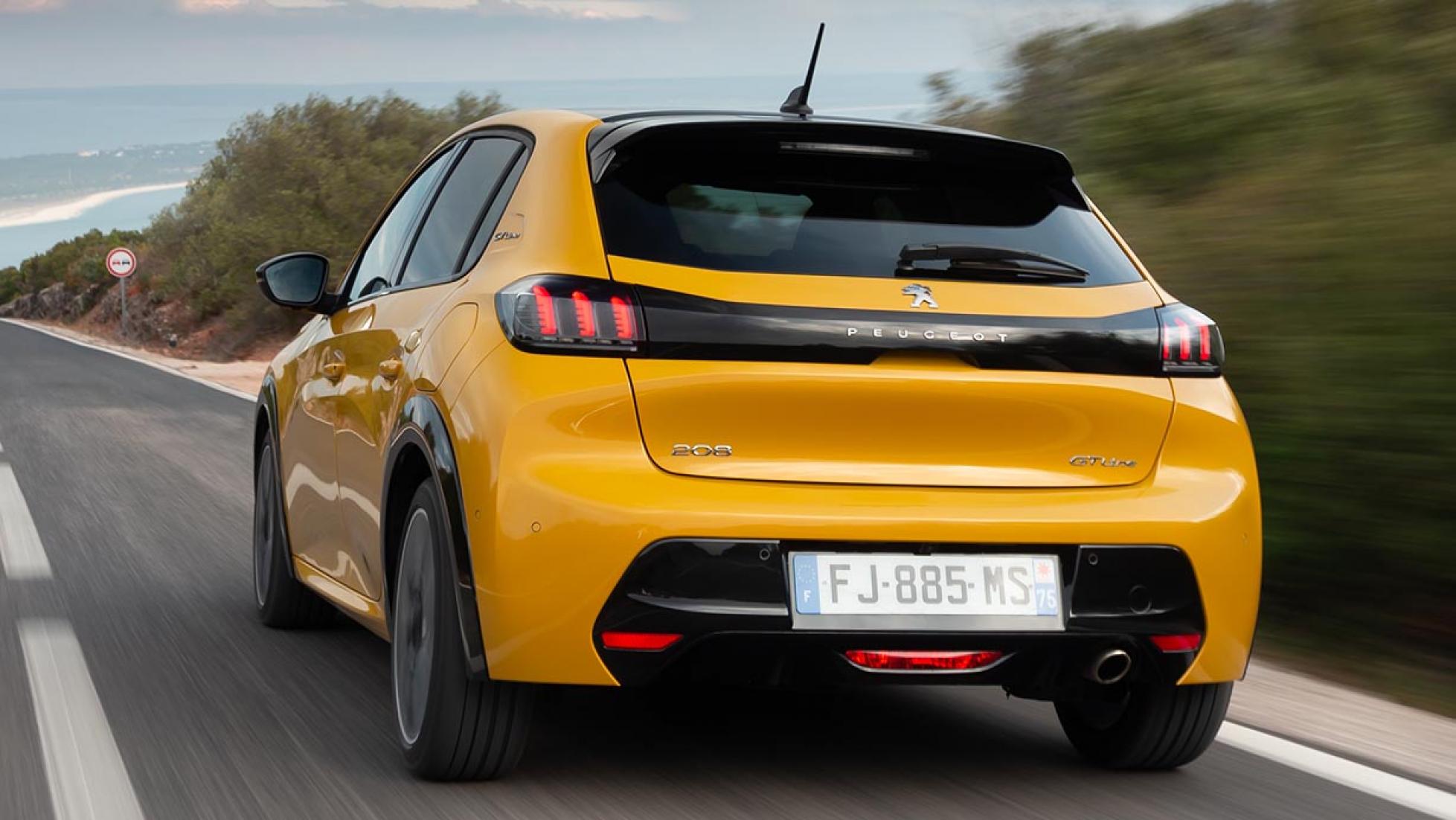
The 74bhp petrol is best left as the vehicle of choice for the L-plate contingent – it exists as the base price banner car, the ‘new 208, from £16k’ poster car. The 99bhp version starts at £17k and it’s a cracker. It makes the chirrupy 3cyl noises we like without the vibration we don’t and has a decent slug of performance. Just a pity that the standard six-speed manual that it’s joined to is more rubbery than condom-flavour chewing gum.
You could solve that by stretching to the 128bhp 3cyl 1.2-litre, which gets an eight-speed auto as standard. Eight speeds in a supermini! Heady times. It’s a great box, best in class, in fact, since the VW Group’s DSG has been so utterly hobbled by WLTP shift strategy. The extra poke doesn’t turn the 208 into a warm hatch – it’s half a second slower to 100kph than the e208 – but it’s spritely enough to make the car feel bright and energetic.
The chassis itself isn’t trying to be as agile and chuckable as a Fiesta, but it feels wieldy purely because the steering wheel is pocket-sized.
The ride’s fine on 16s, but the handsome 17s that arrive on GT-line trim do the 208’s rolling refinement no favours, and it gets a bit jiggly. Hold that thought.
The e-208 is around 300kg heavier than a petrol-powered 208, and though the weight is hung far lower in the chassis, Peugeot’s had to toughen up the springs and redesign the rear suspension to support the heft. With firmer settings and less overall travel, the e-208 is noticeably fidgetier again. In an urban car that’ll have to deal with broken city streets, speed bumps, tramtracks and so on, that’s a shame. Then again, only Jaguar has so far managed to make a modern EV with a genuinely impressive ride. It’s much better on the smaller rims, too.
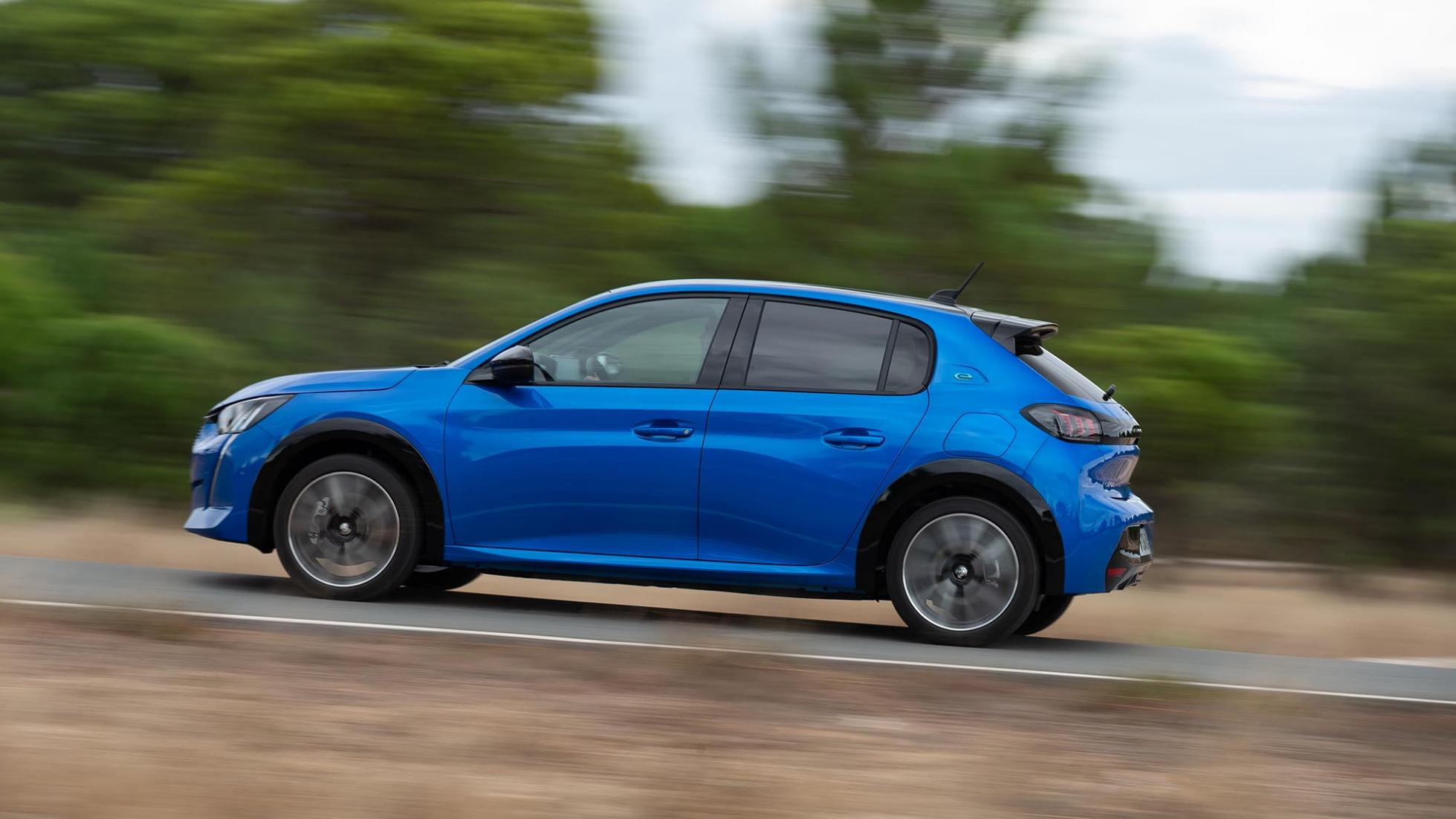
The e-208 feels very conventional inside, just as it looks like a standard 208 outside. Same clever dashboard, same auto gearlever, just with a ‘B’ mode for upping the regenerative braking. Not enough to be a true one-pedal car, but handy when you’re conserving range. Same modes too: Eco (82bhp, no climate control), Normal (106bhp) and Sport (the full 136bhp). Guess which we spent most time in?
Off the line, the e-208 accelerates gradually, without the insta-thwack YouTube thrives on. Momentum builds consistently and it does indeed feel more rapid than the lighter petrol cars. Speedy. Zippy. Good in town. The brakes aren’t too dead underfoot either, and the re-gen is well-judged. It all feels very… normal. We suspect this is exactly the intention. There isn’t even a spaceshippy zoom-woosh noise to accompany prodding the go pedal. Peugeot reasons that one of the big EV boons is their silence, and gimmicky fake engine tones are pointless.
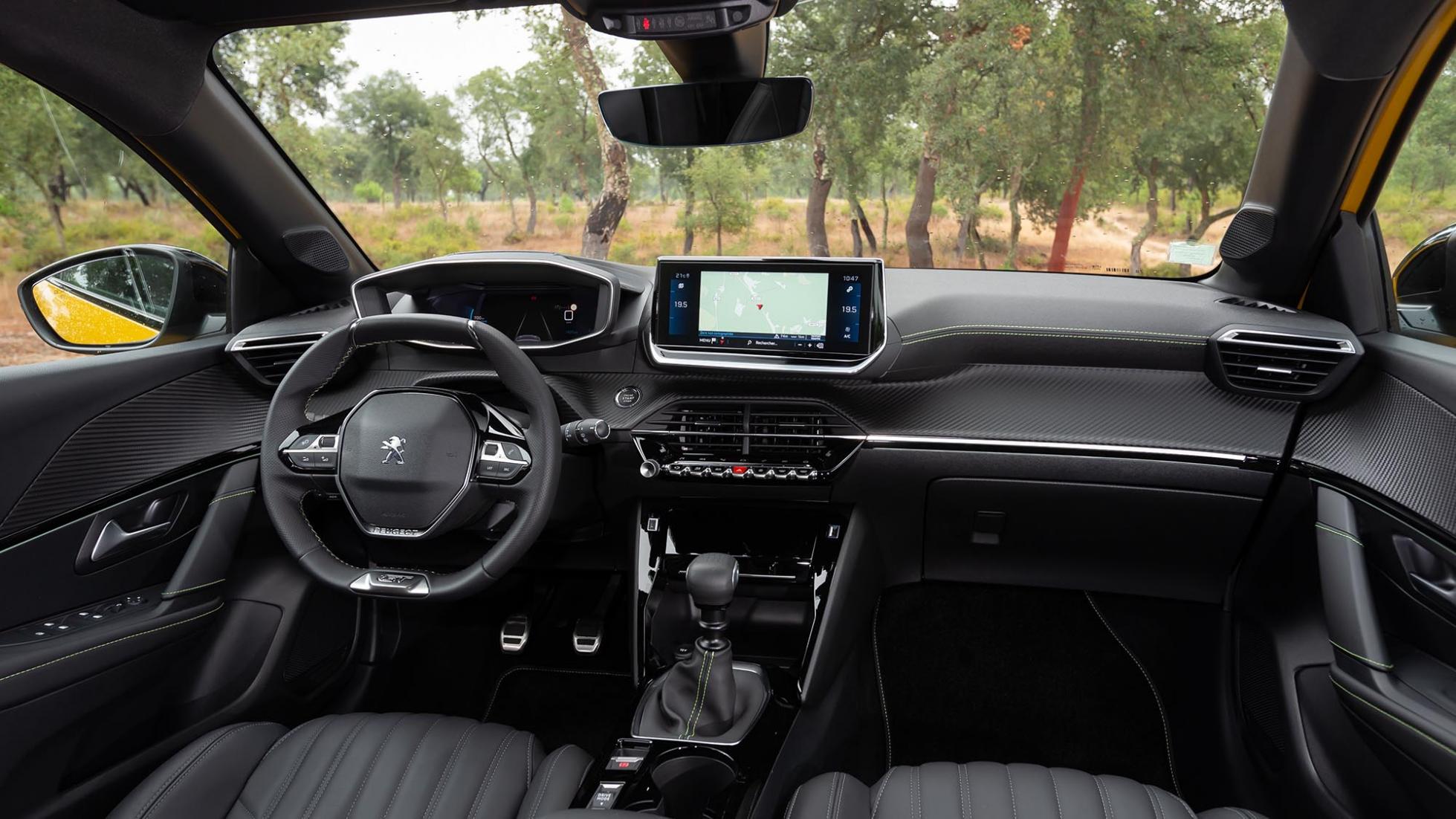
ON THE INSIDE - Layout, finish and space
The first thing you notice is the uplift in quality. The materials aren’t just better than the old 208’s. The denser plastics, tasteful metal and woven ‘carbon’ touches put anything up to a Mini in the shade here. Audi and VW have slightly sacrificed touchy-feely quality at the altar of ever-snazzier touchscreens. Peugeot… hasn’t.
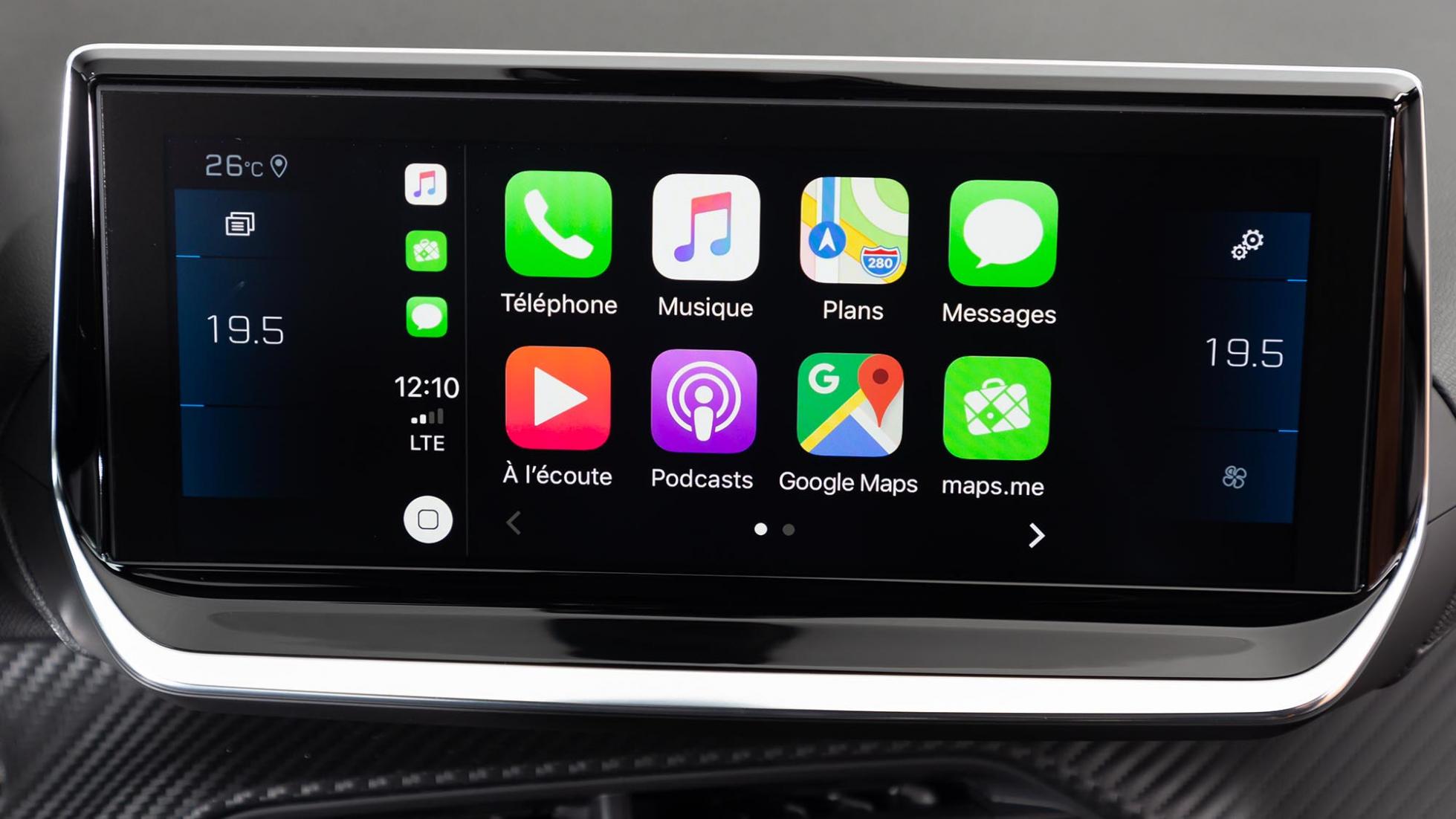
Yep, usual Peugeot-Citroen gripe. The touchscreen in which the climate control is buried isn’t the swiftest to react, nor the most logical to operate. Still, the touch-sensitive shortcut keys help matters, and there’s Apple CarPlay and Android Auto as standard. So it’s not as if you’ll ever use the built-in nav. That’s what Waze is for.
Elsewhere, Peugeot’s pulled off some lovely touches in the 208. The ‘3D’ instrument cluster works superbly, projecting speed just that bit more prominently than say, revs or fuel. It’s a really attractive and unique detail. Peugeot reckons it saves 0.5sec of glancing time which makes taking your eyes off the road safer. Even if that’s intangible, it’s a pleasant touch and for configuration-happy types there are several different screen layouts and colour schemes to cycle through.
Cabin stowage isn’t a strong suit – the cupholders won’t support your grande latte and the door bins aren’t carpeted, so anything in there will rattle like, well, an old Peugeot.
But we like the idea of concealing the rubberised smartphone pad – equipped with wireless charging in GT-line models – behind a rotating door. Anything that makes phone usage behind the wheel less of a temptation is to be applauded. There’s a regular USB and USB-C socket too, so the 208’s futureproof but doesn’t alienate most current devices. Take note, Mercedes.
All 208s have five doors – the market for three-door hatchbacks simply dried up without trace. So, access to the rear seats is a doddle, but they’re not the roomiest pair. Two adults will just about survive a short lift, but this is a family car if the kids are pre-teens only. Still, even if you pick the e-208, there’s no sacrifice in boot space or legroom, as the batteries fill the cavities vacated by the exhaust and fuel tank.
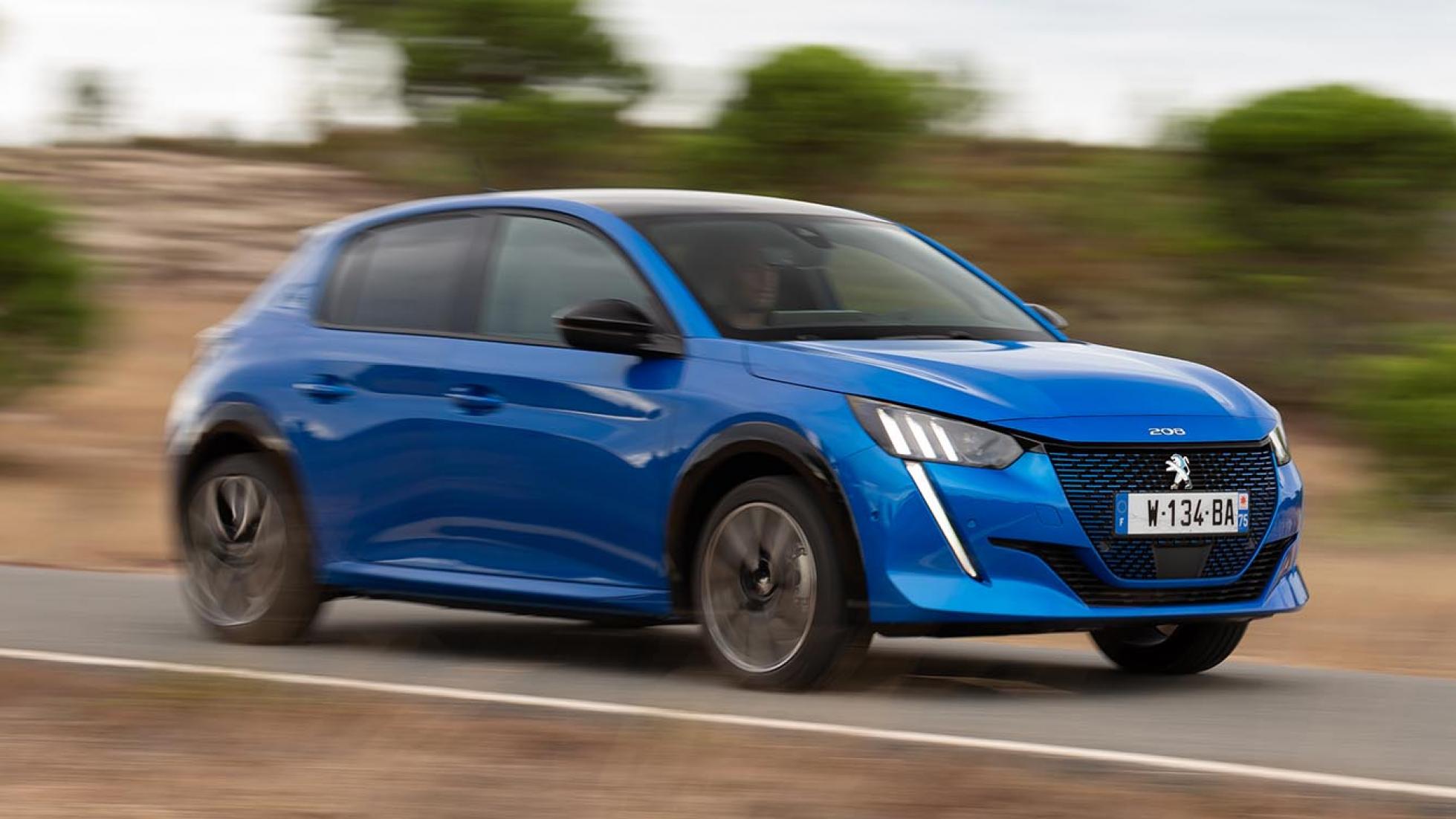
OWNING - RUnning costs and reliability
Peugeot claims the e-208 offers 340km, of range on the more realistic WLTP cycle. The cars in test in Portugal, being subjected to a heavy right foot and copious air-con usage, claimed 290-300km of range when recently taken off charge. Likely, the buzz of using Sport mode would quickly subside and if you’re sticking to Normal mode and using the re-gen copiously, Peugeot reckons an average supermini driver would only have to recharge once a week. Certainly, against the 209km offered by the Honda e, the e-208’s off in the distance. The new Renault Zoe meanwhile, is good for around 354km of real-world endurance.
At the e-208’s launch many charts and tables were presented which demonstrate that, over a four-year period, it’d be possible to make the total cost of owning an e-208 match a petrol 208.
That’s because while the EV has a higher monthly rental, Peugeot reckons that’ll be equalled out by lower maintenance and parts costs, lower fuelling costs and incentives like dodging congestion charges and higher tax bands.
Course, a petrol 208 is likely to, in real life, cover higher average mileages than the more urban-friendly e-208, so the calculation isn’t as simple as that, but there’s no doubt Peugeot is conscious that pitching two models with different powertrains is potentially a confusing one, and promises buyers will be walked through their options in showroom and online to help them make the decision that’s most logical for how and where they use a car, not what’s most profitable for the brand.
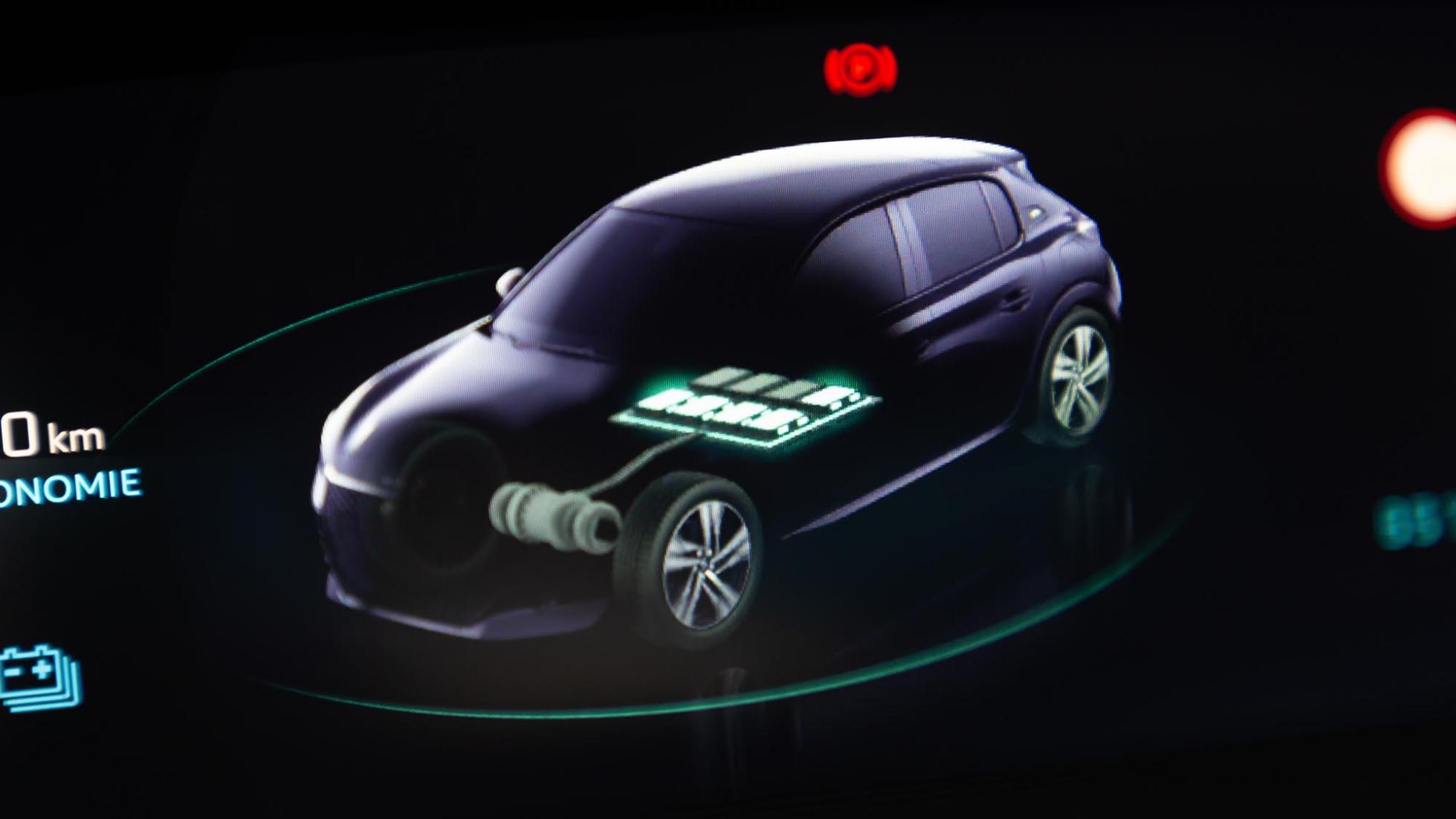
Whichever 208 you’re tempted by, depreciation needn’t put you off. Peugeot says it’s had the biggest uplift on residual values for a supermini in two decades with this generation of 208, thanks to the perceived quality skyrocketing and the future-ready nature of the e-208. Time will tell if the market agrees, but Peugeot’s new approach of not heavily discounting at the point of sale appears to be paying dividends.
Cash prices start at £16,250 for a basic 208 with 74bhp and Active trim, which features only five gears rather than six, 16-inch alloys, LED running lights, electric heated door mirrors and in the e-208, automatic climate control. But getting one of those would be like booking a hotel in Vegas then staying in the airport hotel. You can do better.
So, next up is Allure trim, kicking off at £18,850. This adds 17-inch rims, leather-effect trim and the 3D Cockpit, plus nattier LED tail lights. Well worth it.
Confusingly, there are GT-line and GT trims, with the former costing from £20,700 (+parking sensors, reversing camera, ambient lighting, full LED lights). The e-208 alone is available in top-spec GT trim, from £29,650 – a full £4,600 more than the most basic e-208, after the £3,500 government grant.
VERDICT
|
FOR |
AGAINST |
| Strong choice of petrol and electric drive, it looks fantastic and the build quality is stunning. Take note, VW | Fine margins really: not as roomy as a Polo, touchscreen still a fiddle. The ride’s jiggly, especially in the e-208 |
| SCORE | 7/10 |


